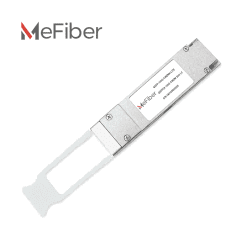A 100G CWDM QSFP, or 100 Gigabit Ethernet Coarse Wavelength Division Multiplexing Quad Small Form-factor Pluggable, is a high-speed optical transceiver used for data transmission over fiber optic cables.
Here’s a breakdown of the term:
- 100G: This refers to the data rate that the transceiver can support, which is 100 Gigabits per second (Gbps).
- CWDM: This stands for Coarse Wavelength Division Multiplexing. It’s a technology that allows you to transmit multiple data streams over a single fiber optic cable by using different wavelengths of light.
- QSFP: This stands for Quad Small Form-factor Pluggable. It’s a hot-swappable transceiver form factor that is commonly used in data centers and enterprise networks.
Benefits of 100G CWDM QSFP:
- High Speed: Supports data rates of 100 Gbps, ideal for high-bandwidth applications like data centers and cloud computing.
- Cost-Effective: CWDM technology is more cost-effective than other high-speed options like Dense Wavelength Division Multiplexing (DWDM) for shorter distances.
- Scalability: Allows you to easily scale your network capacity by adding more transceivers.
- Long Reach: Can transmit data over distances of up to a few kilometers depending on the specific transceiver model.
Applications of 100G CWDM QSFP:
- Data center interconnects
- Enterprise network backbones
- High-performance computing environments
- Service provider networks
Things to Consider When Choosing a 100G CWDM QSFP:
- Distance: Choose a transceiver that supports the required transmission distance for your application.
- Compatibility: Ensure the transceiver is compatible with your network switches and other equipment.
- Fiber Type: Select a transceiver that is designed for the type of fiber optic cable you will be using (single-mode or multi-mode).

